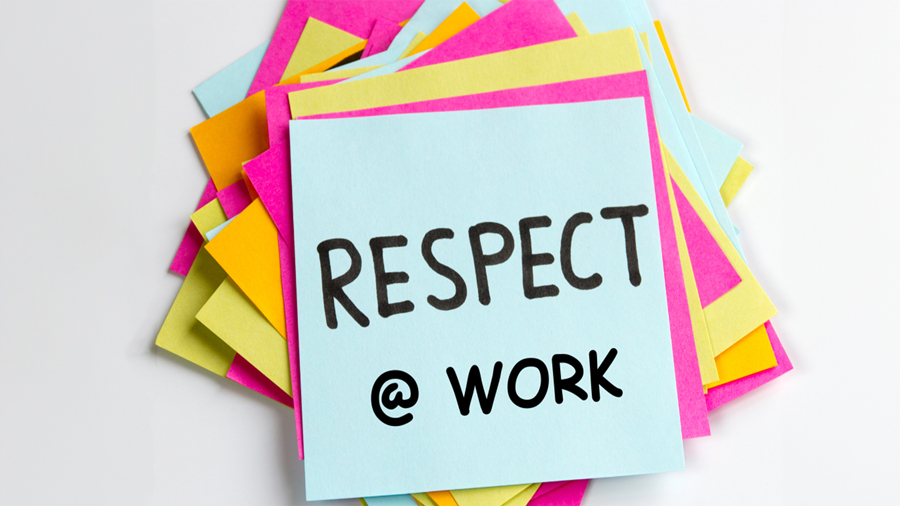How to create an effective social media policy?
Social media has revolutionized the way we communicate, both personally and professionally. It is where we connect with others, share our experiences, express ourselves, and conduct business.
As the lines between personal and professional lives blur, employers increasingly recognize the importance of having a well-defined social media policy for employees because it is a good way to establish rules, expectations, and best practices regarding its usage in the “workplace“.
An effective social media policy should be clear, concise, and written in plain language. It should be reviewed and updated frequently to reflect current social media practices. The policy should be circulated to all employees via internal communications and included in the employee handbook.
The social media policy should include:
- your companies and employee social accounts
- everyone in your company regardless of their role or position
- simple language that is easy for anyone to understand
- ensure that it is introduced in your orientation and onboarding process and updated as needed
What to Consider:
Reputation: It will help employees understand what is acceptable behaviour online, reducing the risk of damaging the company’s reputation.
Security: Outline guidelines for maintaining security, such as avoiding sharing sensitive information and recognizing suspicious activity.
Compliance: Ensure that employees are aware of and compliant with relevant legal requirements, reducing the risk of legal repercussions for the company.
Productivity: Establish expectations for appropriate use of social media in the workplace, helping employees stay focused on their tasks.
Protection of Intellectual Property: Include guidelines for the appropriate use of company logos, trademarks, and copyrighted material.
Brand Consistency: Ensure that all employees who engage in social media activities on behalf of the company adhere to brand guidelines, maintaining a consistent and professional brand image across all platforms.
Legal: Privacy, online harassment, and the spread of misinformation. Case in point: Metrolinx v. Amalgamated Transit Union, Local 1587
How to create a company social media policy
The following points are worth considering while developing your social media policy:
Define Social Media:
Clearly define which social media sites your company uses and which ones the social media policy applies to. You can include blogs, social networking platforms, video streaming and other types of media in your definition and whether those applications will be monitored.
Use of Official Accounts
An important part of a social media policy is specifying who can access company social media accounts. Include guidelines about content and whether employees need to get approval before posting.
If your organization engages with the public through social media, your social media policy may include guidelines for how employees should respond to comments or complaints and interact with others.
Which department handles complaints and what is the process? Which employees and departments will make posts? Companies often provide training where the rules and roles of its social media accounts are defined.
In addition you may want to consider:
- How often are passwords changed?
- Can passwords be shared?
- Which devices can be used?
*It is a good idea to provide an email address where employees can send posts for approval.
Which types of social media posts are not allowed?
Define which information is and is not allowed to be shared and the consequences if this rule is breached.
Explain the rules for behaviour on personal social media accounts, including comments about competitors, or complaints about bosses, customers or coworkers. Some companies have separate personal and corporate social media policies.
Employee Conduct
A good social media policy clearly explains what behaviour is and is not acceptable. Your policy should include guidelines for appropriate conduct, including respectful communication. Employees should behave in a professional manner and avoid engaging in disrespectful or offensive behavior online
Employees should adhere to all applicable laws and regulations when using social media, including the terms and conditions of each site or app.
How employees represent themselves on personal social media can result in negative professional consequences. Remind your staff that they’re representing your organization, even when using their personal accounts.
Cyber Bullying and Harassment
It is essential that organizations implement and enforce policies that protect employees from all forms of bullying and harassment
Failing to protect employees from being cyber bullied or harassed can expose organizations to liability under occupational health and safety, human rights and other laws. Even if an organization already has an existing workplace harassment policy, it’s a good idea to include specific provisions that address cyberbullying in the workplace.
Describe what employees should do if they are experiencing bullying or harassment, including who they should reach out to for help.
Confidentiality and Privacy
A social media policy helps to protect your organization’s sensitive information. It should prohibit employees from posting confidential company and client information.
Specify protocols for handling confidential information and interacting with clients, customers, and colleagues on social media platforms.
Remind employees that their posts on social media sites are not private, and may be viewed by anyone, including their employer.
Security
Your social media policy should inform employees about the potential legal and security risks involved in social networking and what they can do to protect themselves and the company. Highlight the need to use good judgment as comments posted on social networking sites can spread despite the original posting being removed.
Additional policy elements include guidance on social media account password management, which devices can be used for your company’s social media, whether personal use is allowed on the company network, and what to do if there is a security breach.
Monitoring and Enforcement
Clearly lay out how you monitor employee social media activity. Your policy should specify that violating the policy could result in disciplinary action, even up to termination. Outline the process employees should follow to make complaints or report incidents, including who to contact.
Every organization handles monitoring and enforcement differently, but make sure your employees know that they are responsible for what they post on social media, even outside of the office.
Benefits
Even if your organization doesn’t have a huge online presence, many of your employees likely use social media. Having a social media policy helps to establish guidelines for employee behaviour.
A comprehensive social media policy can:
- help your organization avoid liability for what employees or clients say or do online.
- educate employees on the risk of using social media, how they can protect themselves, and using good judgment when interacting with others online.
- help manage employee conduct and discipline.
- protect employees from cyberbullying and harassment.
- educate employees on the risk of using social media, how they can protect themselves, and using good judgment when interacting with others online.
- protect your organization’s reputation by keeping social media content aligned with the company’s brand and values.
Social Media Policy Rules:
In our Free Social Media Policy we include a clear list of standards and guidelines for employees to follow in their use of personal and work social media accounts.
Implementation:
Definition of Roles:
Establishing roles will help employees understand who manages and oversees your company’s social media accounts.
Consider how many employees and which departments will handle the social media accounts. It is a good idea that these employees be trained in this area.
Communication:
The policy should be circulated to all employees via internal communications, and included in the employee handbook.
Policy Updates:
Keep the policy current and update employees as changes occur.
Audits:
Managers can be appointed to audit and oversee that the policy is being followed. Employees should be informed that there is an auditing process in place.
Customer Complaints/Negative Commenting Guidelines:
Be Firm with Negative Comments
If an offensive comment is posted, respond with a clear firm message indicating that it is not condoned.
Ask the user to delete the offending comment If they do not delete the message, consider blocking the user.
Offline Conversation:
A social media representative should immediately refer the user to the offline public complaint mechanism to ensure that any offensive or sensitive conversations take place in a private setting.
Neutrality:
Before responding to negative online comments or criticism, use phrases that are non judgemental. Employees should have the opportunity to present their own version of what has occurred prior to responding to complaints.
Templated Responses:
Standard responses to common issues, critical or complaint-type posts can be established to quickly address any negativity.
Social Media Policy
It is important to identify what harassing and offensive content is and ensure that an employee’s right to privacy and dignity is protected.
HR Proactive Inc. provides HR Advice, Tools, Tips and Policies visit us at myhradvice.ca











